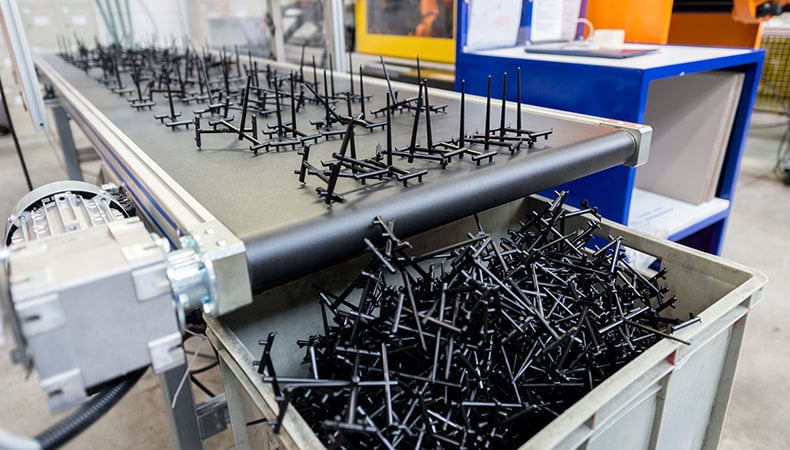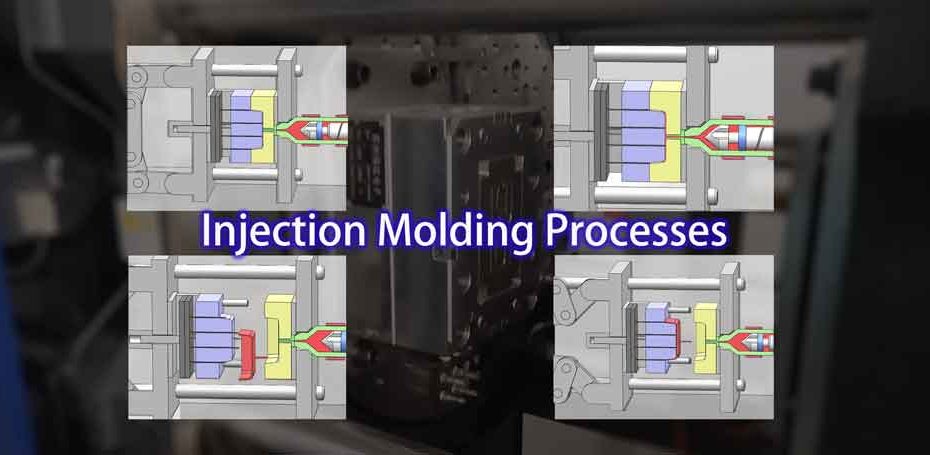Why Plastic Injection Molding Is Vital for Precision and Resilience
Recognizing the Basics of Plastic Shot Molding Processes
Plastic shot molding offers as a foundation of contemporary manufacturing, giving a systematic strategy to creating complex parts with accuracy. This process not just includes the essential steps of melting and injecting materials into mold and mildews but additionally entails a nuanced understanding of numerous affecting aspects, such as temperature and pressure. As industries progressively demand performance and top quality, the details of this technique become more critical. Checking out these necessary components might expose exactly how even small changes can lead to considerable improvements in production end results, questioning about the potential for technology in this well established procedure.
What Is Plastic Injection Molding?
Plastic injection molding is a commonly used production procedure that transforms thermoplastic and thermosetting products right into specific and complex forms. This strategy is favored for its capacity to create high volumes of identical get rid of outstanding accuracy, making it a vital technique in different industries, consisting of auto, durable goods, and medical gadgets.
The procedure involves thawing the picked plastic product and infusing it right into a mold and mildew under high stress. The mold, designed to the specifications of the preferred part, enables the liquified plastic to form as it cools and solidifies. When the product has actually set, the mold and mildew is opened up, and the finished component is ejected.
Plastic injection molding provides a number of advantages, including minimized waste, consistency in production, and the capability to include intricate designs that might be testing with various other manufacturing methods. Additionally, it sustains a wide array of products, each giving one-of-a-kind homes that can be tailored for particular applications. As industries remain to introduce, plastic shot molding stays at the leading edge, allowing the development of advanced items that satisfy progressing consumer demands.
The Shot Molding Refine
The injection molding procedure is an innovative method that includes several vital phases to create premium plastic elements. Plastic pellets are fed right into a heated barrel where they are thawed right into a viscous fluid. This molten plastic is then injected under high stress into a precision-engineered mold and mildew, which forms the material right into the preferred form.
As soon as the mold is filled, the plastic is permitted to strengthen and cool, taking the form of the mold and mildew cavity. Air conditioning time is important, as it affects the cycle time and the last buildings of the molded component. After adequate air conditioning, the mold opens up, and the finished part is ejected using ejector pins.

Materials Utilized in Injection Molding
Various products can be used in the shot molding process, each offering special homes that cater to particular applications. The most generally utilized products include thermoplastics, thermosetting plastics, and elastomers.

Thermosetting plastics, like epoxy and phenolic resins, go through a chemical adjustment during the healing process, leading to an inflexible, inflexible structure. These materials are excellent for applications calling for high warm resistance and architectural integrity, frequently made use of in electrical insulators and automobile components.
Elastomers, including silicone and rubber-based products, supply adaptability and resilience. Their distinct buildings make them suitable for applications that demand elasticity, such as seals and gaskets.
Additionally, specialty materials like bio-based plastics and composites are obtaining grip for their ecological advantages and boosted efficiency features, widening the scope of injection molding applications in numerous sectors. Understanding the residential or commercial properties of these materials is vital for picking the ideal kind for details tasks.
Benefits of Injection Molding
Injection molding stands out as a highly reliable production procedure that uses various advantages for producing intricate get rid of accuracy. One of go right here the most substantial advantages is the capability to create detailed layouts that would be difficult or difficult to achieve with various other techniques (Plastic Injection Molding). The process permits comprehensive features and limited tolerances, ensuring high-grade elements
Furthermore, injection molding is recognized for its fast production capacities, making it an optimal choice for high-volume production. Once the mold and mildew is created, components can be created promptly, minimizing preparations and raising general productivity. This effectiveness not only reduces manufacturing expenses yet likewise gives an one-upmanship on the market.
The convenience of materials utilized in shot molding even more boosts its appeal. A variety of thermoplastics and thermosetting polymers can be utilized, permitting manufacturers to choose products that best satisfy their details requirements, consisting of warm, stamina, and adaptability resistance.
In addition, the procedure lessens waste, as excess material can commonly be read here reused and recycled. This sustainability facet contributes to a decreased ecological influence, making shot molding a responsible manufacturing choice. Generally, the benefits of shot molding make it a recommended approach for several industries.
Elements Impacting Product High Quality
While many factors can affect item top quality in shot molding, recognizing these elements is essential for accomplishing ideal results. Secret elements include material selection, processing parameters, and mold and mildew layout.
Product option plays an essential duty, as various polymers display distinct buildings that influence flowability, toughness, and thermal security. Insufficient material choice can bring about issues such as bending or insufficient filling.
Processing criteria, consisting of cycle, pressure, and temperature level time, must be thoroughly managed. Variations in these setups can result in inconsistencies in component dimensions and surface coating. Exceedingly high temperatures might trigger destruction of the polymer, while insufficient pressure can result in short shots.
Mold and mildew style is just as crucial, as it identifies the circulation of the molten plastic and the cooling browse this site process. Poorly created molds may lead to unequal cooling rates, causing dimensional errors and residual stress and anxieties.

Final Thought
In conclusion, plastic injection molding functions as a critical manufacturing procedure that makes it possible for the reliable manufacturing of top notch components. Mastery of the shot molding process, consisting of the understanding of materials and the influence of various variables on item high quality, is vital for accomplishing optimal outcomes. The benefits of this technique, such as cost-effectiveness and style adaptability, further emphasize its relevance across multiple industries, strengthening its condition as a preferred selection for high-volume production.
Plastic injection molding offers as a foundation of modern production, offering a systematic approach to creating complex parts with precision.Plastic injection molding uses a number of benefits, including reduced waste, consistency in production, and the capacity to integrate intricate layouts that may be testing with other making methods (Plastic Injection Molding). As sectors continue to introduce, plastic shot molding remains at the center, allowing the development of sophisticated items that satisfy advancing customer needs
The shot molding procedure is an innovative technique that includes several crucial phases to produce high-grade plastic elements.In verdict, plastic injection molding offers as a crucial production procedure that allows the reliable manufacturing of premium parts.